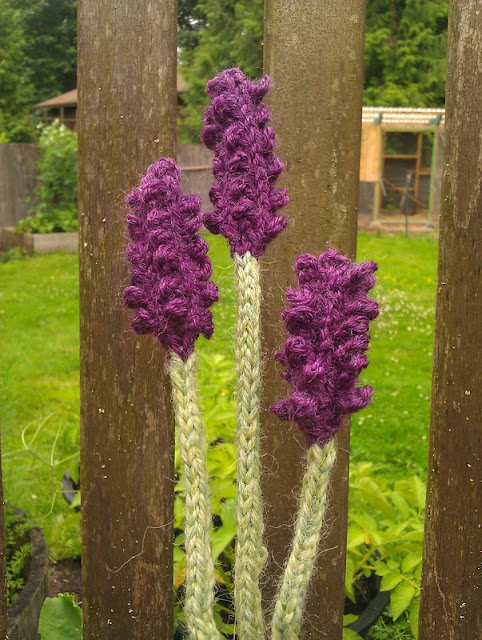Fourteen Ears, Seven Tails, and Zero Eyes
"Seven Blind Mice" is a children's picture book written and illustrated by Ed Young. The characters are seven differently colored mice who are sightless, which is an important part of the story.
| Seven Blind Mice by Ed Young |
I knitted the mice out of very small quantities of feltable wool. The pattern, called Knit Felted Catnip Mice, is by Jen Kuback on ravelry.com . It is as easy as pie to knit. I skipped the catnip.
Each mouse is 3-3 1/2 inches long without tail after felting. I don't remember what size needles I used. If they are too big, more time agitating in hot water will shrink them some, but you may have to experiment if you are looking for a particular size.
The mice are designed to be stuffed and sewn shut, but I left the hole open before felting to make them usable as finger puppets for children. I also didn't add eyes since the mice in the story are blind. To make a mouse with eyes, you can add a stitch or two of a contrasting color before felting, or sew on beads as long as child or pet safety is not a concern. These little colorful mice are very popular with kids and quick fun to make. Now I just need to knit a big elephant to go with them.
Extreme Knits
This section of my post is dedicated to sharing examples of extreme knitting that make me wonder about the designer's sanity. I just am speechless about this one. I feel so inadequate in every way just looking at it. This knitted skeleton was part of a display created by Ben Cueva. See it at http://bencuevas.wordpress.com/2010/10/21/transcending-the-material/.
 |
| Created by Ben Cueva |
 |
| from chiro.org |
















